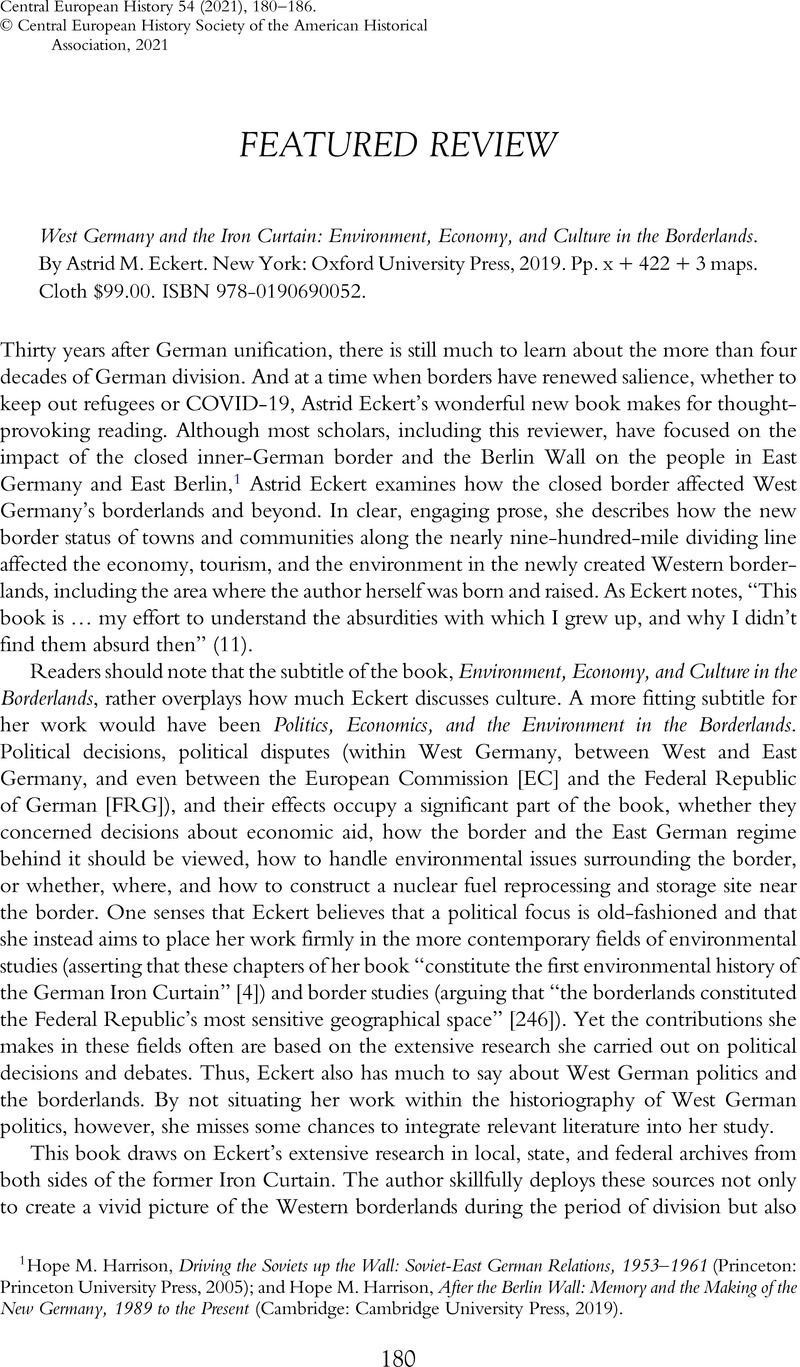No CrossRef data available.
Published online by Cambridge University Press: 08 April 2021

1 Harrison, Hope M., Driving the Soviets up the Wall: Soviet-East German Relations, 1953–1961 (Princeton: Princeton University Press, 2005)Google Scholar; and Harrison, Hope M., After the Berlin Wall: Memory and the Making of the New Germany, 1989 to the Present (Cambridge: Cambridge University Press, 2019)CrossRefGoogle Scholar.
2 Here Eckert ignores the developments in the Western zones moving toward the creation of a West German state allied with the Western powers, the stopping of which was the real Soviet goal with the blockade. The introduction of the DM to stabilize the economy was part of a broader process in the West. Eisenberg, Carolyn, Drawing the Line: The Western Decision to Divide Germany, 1944–1949 (New York: Cambridge University Press, 1996)CrossRefGoogle Scholar.
3 Christian Bangel et al., “The Millions Who Left,” Zeit Online, May 30, 2019 (https://www.zeit.de/politik/deutschland/2019-05/east-west-exodus-migration-east-germany-demography).
4 Harrison, After the Berlin Wall.
5 Lindenberger, Thomas, “Divided but Not Disconnected: Germany as a Border Region of the Cold War,” in Divided but not Disconnected: German Experiences of the Cold War, ed. Hochscherf, Tobias, Laucht, Christoph, and Plowman, Andrew (New York: Berghahn, 2010), 11–33Google Scholar. Quoted in Eckert, West Germany and the Iron Curtain, 7.
6 On the many ways the GDR used FRG interests in facilitating movement across the border to make money, see Ash, Timothy Garton, In Europe's Name: Germany and the Divided Continent (New York: Vintage Books, 1993)Google Scholar.
7 For these debates in Berlin after the fall of the Berlin Wall, see Harrison, After the Berlin Wall.
8 Germany's Green Belt was the first along the former Iron Curtain. See “The German Green Belt,” Federal Agency for Nature Conservation (https://www.bfn.de/en/activities/protecting-habitats-and-landscapes/the-green-belt/germany.html). It is now part of a broader Green Belt along the entire former Iron Curtain border. See “The European Green Belt,” Federal Agency for Nature Conservation (https://www.bfn.de/en/activities/protecting-habitats-and-landscapes/the-green-belt/europe.html).
9 Harrison, After the Berlin Wall, 156–58; “Berlin Wall Trail” (https://www.berlin.de/mauer/en/wall-trail/).